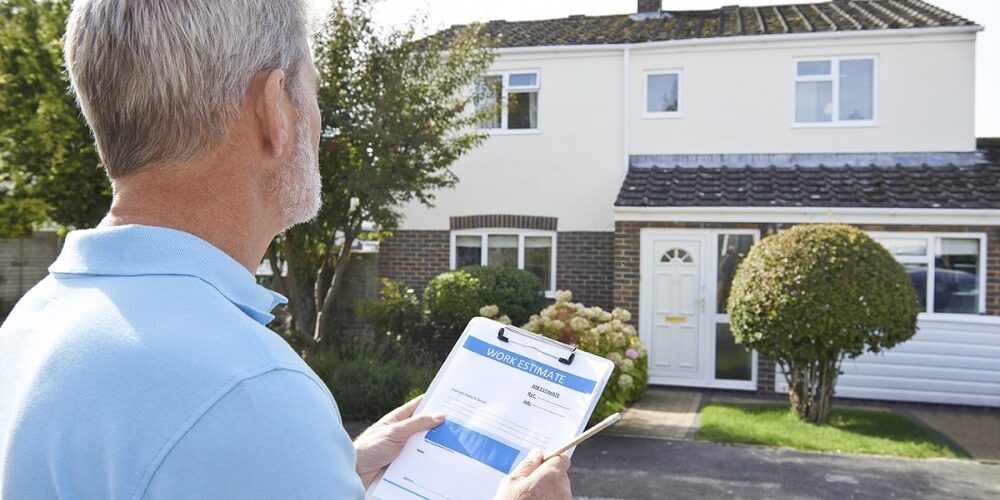If you’re a homeowner, you understand the importance of safeguarding your investment, and one critical aspect of this is securing a reliable insurance policy for your roof. In this comprehensive guide, we will delve into the intricate details of the roof insurance claim process, offering insights, tips, and strategies to help you navigate this often complex terrain.
Roof maintenance is an essential part of homeownership, and having a robust insurance policy in place can be a game-changer when unforeseen damages occur. The ‘roof insurance claim’ process is designed to provide financial relief, but understanding the ins and outs is crucial to ensure a smooth and successful experience.
Understanding Roof Insurance Coverage
Types of Roof Insurance Coverage
Before delving into the claims process, it’s imperative to grasp the various types of roof insurance coverage available. Policies can range from basic coverage that protects against specific perils to comprehensive plans covering a broader spectrum of damages.
Commonly Covered Roof Damages
Roof insurance typically covers a range of damages, including storm damage, leaks, and structural issues. Understanding what your policy includes can make a substantial difference when it comes time to file a claim.
Limitations and Exclusions in Policies
While insurance coverage provides a safety net, it’s equally important to be aware of any limitations and exclusions in your policy. Certain types of damages, neglect, or pre-existing issues may not be covered, and being informed helps manage expectations.
Preparing for a Roof Insurance Claim
Regular Roof Maintenance Tips
Proactive roof maintenance not only prolongs the lifespan of your roof but also strengthens your position when filing a claim. Regular inspections and timely repairs showcase your commitment to keeping your property in top condition.
Documentation of Roof Condition
Accurate documentation is a key element in the claims process. Keep detailed records of roof inspections, repairs, and maintenance. High-quality photographs and thorough notes provide compelling evidence of your roof’s condition before any damage occurs.
Knowing Your Insurance Policy Inside Out
Many homeowners make the mistake of only thoroughly reviewing their insurance policy when they need to make a claim. Familiarize yourself with the details beforehand, ensuring you understand coverage limits, deductibles, and any specific requirements for filing a claim.
Signs That Your Roof Needs Inspection
Interior and Exterior Warning Signals
Recognizing signs of roof damage early on is crucial. From water stains on ceilings to missing shingles, both interior and exterior warning signals should be addressed promptly to prevent further issues.
Impact of Weather on Roof Health
Weather conditions play a significant role in the health of your roof. Understanding how elements such as heavy rainfall, snow, and hail can impact your roof allows you to be proactive in scheduling inspections and maintenance.
Importance of Professional Inspections
While regular self-inspections are beneficial, the expertise of a professional roofing contractor is invaluable. Schedule periodic inspections to identify potential issues that might go unnoticed by an untrained eye.
Step-by-Step Guide to Filing a Roof Insurance Claim
Initial Contact with Your Insurance Provider
When damage occurs, the first step is to contact your insurance provider promptly. Provide them with all necessary information, including the date and details of the incident. Prompt communication sets the tone for a smoother claims process.
Necessary Documentation Checklist
Compile a comprehensive documentation checklist that includes photographs, repair estimates, and any other relevant information. Thorough documentation enhances the likelihood of a successful claim.
Filing the Claim: Do’s and Don’ts
Follow the proper procedures when filing your claim. Be honest and accurate in your statements, avoid unnecessary embellishments, and refrain from admitting fault if the cause of the damage is unclear.
Roof Damage Assessment and Documentation
Working with Insurance Adjusters
Insurance adjusters play a crucial role in determining the extent of your claim. Work collaboratively with them, providing access to all necessary documentation and being available for inspections.
Importance of Detailed Documentation
Detail is paramount when documenting roof damage. Include information on the cause, extent, and recommended repairs. The more comprehensive your documentation, the stronger your case for a fair payout.
Assessing Both Visible and Hidden Damages
Roof damages aren’t always visible to the naked eye. Be sure to assess both apparent and potential hidden damages, as insurance coverage extends to a range of issues that might not be immediately apparent.
Common Reasons for Roof Insurance Claim Denial
Policy Violations and Negligence
Claims can be denied if policyholders are found to violate specific terms or if negligence is identified. Understanding your policy and adhering to its requirements is essential to avoid denial.
Lack of Proper Documentation
Inadequate documentation is a leading cause of claim denials. Ensure all required evidence is meticulously gathered and presented to strengthen your case.
Understanding and Addressing Denial Reasons
In the unfortunate event of a claim denial, take the time to understand the reasons behind it. Addressing these issues can often lead to a successful reevaluation of your claim.
The Role of Contractors in Roof Insurance Claims
Hiring Reputable Roofing Contractors
Choosing the right contractor is as important as the insurance claim itself. Research and hire reputable roofing professionals with experience in dealing with insurance claims to ensure quality repairs.
Navigating Insurance and Contractor Relationships
Maintain open communication between your insurance provider and your chosen contractor. A collaborative approach ensures everyone is on the same page, reducing the likelihood of misunderstandings.
Avoiding Scams and Unethical Practices
Unfortunately, the roofing industry is not immune to scams. Be vigilant, research contractors thoroughly, and be cautious of any unsolicited offers or pressure tactics.
Maximizing Your Roof Insurance Payout
Negotiating with Insurance Adjusters
Don’t hesitate to negotiate with insurance adjusters if you feel the initial offer is insufficient. Present additional evidence, quotes, and documentation to support your case.
Presenting Additional Evidence and Quotes
Backing up your claim with multiple quotes and evidence of the cost of necessary repairs can strengthen your position and increase the likelihood of a more favorable payout.
Understanding Depreciation and Deductibles
Be aware of the depreciation and deductibles outlined in your policy. Understanding these factors helps manage expectations and allows for a more informed approach to negotiations.
Post-Claim Roof Maintenance Tips
Utilizing Insurance Payout Wisely
Once your claim is settled, use the payout wisely. Invest in quality materials and professional services to ensure your roof remains in top condition for years to come.
Scheduling Regular Follow-up Inspections
Continued maintenance is key to preventing future issues. Schedule regular follow-up inspections to catch any potential problems early on and address them promptly.
Addressing Future Claims and Policy Adjustments
Learn from the claims process and adjust your insurance policy accordingly. If necessary, seek professional advice to ensure your coverage aligns with your property’s specific needs.
FAQs
- What does roof insurance cover?
Roof insurance typically covers damages caused by specific perils, such as storms, hail, fire, and other covered events. It may also cover repairs or replacement due to normal wear and tear.
- How often should I inspect my roof for potential insurance claims?
Regular roof inspections are recommended at least twice a year, especially after severe weather events. Additionally, it’s advisable to inspect your roof after any significant changes in weather conditions.
- What documentation is essential when filing a roof insurance claim?
Essential documentation includes photographs of the damage, repair estimates from reputable contractors, maintenance records, and any communication with your insurance company. The more detailed and comprehensive your documentation, the better.
- How long do I have to file a roof insurance claim after discovering damage?
The timeframe for filing a roof insurance claim varies but is generally within a reasonable time after discovering the damage. It’s crucial to report damages promptly to ensure a smoother claims process.
- Can I choose my roofing contractor for repairs after a claim?
In many cases, you can choose your roofing contractor. However, it’s recommended to inform your insurance company and ensure that the contractor is reputable, licensed, and experienced in handling insurance claims.
- What should I do if my roof insurance claim is denied?
If your claim is denied, carefully review the denial reasons provided by your insurance company. Address any issues or discrepancies, and if necessary, consider appealing the decision with additional documentation or professional assistance.
- Will my insurance premium increase after filing a roof insurance claim?
While filing a single claim might not necessarily lead to an automatic premium increase, multiple claims within a short period could impact your premium. It’s advisable to check with your insurance provider for specific details.
- Does roof insurance cover all types of roof damage?
Roof insurance covers a variety of damages, including those caused by storms, fire, and other covered perils. However, certain types of damage, such as neglect or pre-existing issues, may not be covered.
- How does depreciation affect my roof insurance payout?
Depreciation refers to the reduction in the value of your roof over time. Some insurance policies factor in depreciation, which means you may receive less than the full cost of repairs. Understanding this is crucial when negotiating your claim.
- Is it possible to adjust my insurance policy after a roof insurance claim?
Yes, it is possible to adjust your insurance policy after a claim. Review your coverage, and if necessary, discuss adjustments with your insurance provider to better align your policy with your property’s specific needs.
Conclusion
In conclusion, navigating the roof insurance claim process requires a proactive and informed approach. By understanding your policy, documenting damages meticulously, and working collaboratively with professionals, you can maximize your chances of a successful claim. Remember, the goal is not just to recover from damages but to ensure your roof remains a reliable and secure component of your home for years to come. Stay informed, stay proactive, and safeguard your investment with a robust understanding of the roof insurance claim process.







